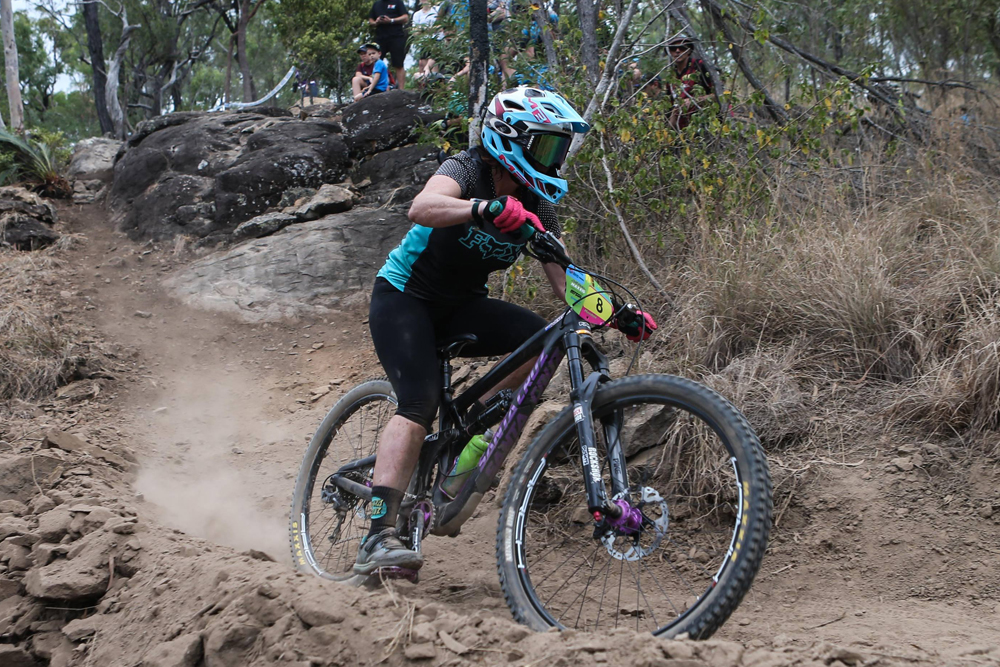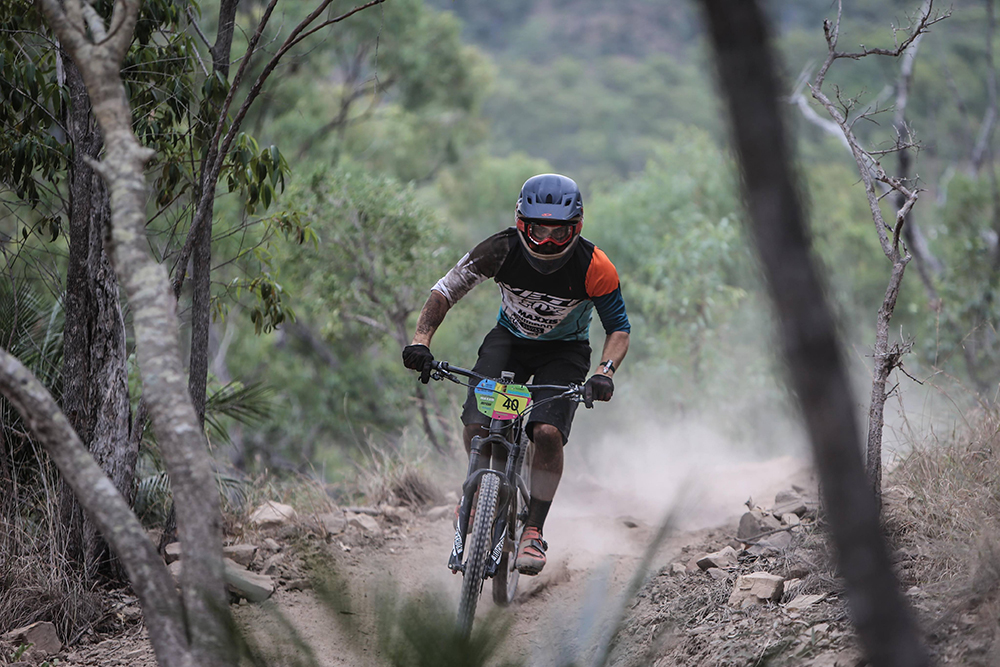
Rockhampton Mountain Bike Club Inc.
powered by TidyHQGravity Enduro Mountain Biking
Gravity Enduro Mountain Biking

Your guide to riding Gravity Enduro
So you’re thinking of having a go at this thing they call Gravity Enduro, but like lots of people, you don’t really know what to expect, how to prepare for your first race, and what exactly you will need.
Gravity Enduro (GE) is a very laidback and social style of racing, and is great for a bit of friendly competition between mates!
The Gravity Enduro course
In Gravity Enduro racing, the course is split into 2 main categories – the timed competitive stages, and the transition (or liaison) stages.
Typically, there will be 3 or more timed competitive stages (depending on the class entered), all predominantly downhill and ranging in difficulty.
The goal is to race down the competitive stages, recording a time for each, which is then consolidated into a single time with the fastest time of all competitors declared the winner.
In between each competitive stage, are the transition (liaison) stages. These will be predominantly uphill, and are for ‘transitioning’ the riders from the end of the previous competitive stage to the start of the next one.
Transition stages aren’t timed, or competitive, however it’s common for time limits of 30 to 40 minutes to be imposed on each transition to ensure the event flows smoothly. All riders have the opportunity to complete all stages in a reasonable time.
Time penalties may be incurred if a rider is deemed to have taken too long on a transition stage.
A typical Gravity Enduro in First Turkey will be 3 stages for Junior, Sport, and Novices classes, and 4 stages for the Elite classes. You can expect to cover around 18 to 20 kms and 300-600 metres elevation depending on the chosen stages for the event.
Most GE events will run for 2-4 hrs, but this depends on the number of riders and the chosen course. The course and stages are generally announced a few days prior to race, or even as late as the riders briefing just to keep it interesting.

Choosing a Gravity Enduro bike
Bike-wise you need a reliable, fully functioning, preferably full suspension rig. A hard-tail is fine, but after a couple of hours in the saddle at a big event, comfort is a big part of the picture.
Geometry needs to be more along the lines of an All Mountain type bike. You’re looking for a bike that can get you down the hill in the fastest time possible, but then back to the top without burning yourself out.
Allowances are not generally made for any mechanical issues encountered during racing, so it’s important to have a reliable and well maintained bike!
Riding Essentials
Typically, the rules for Gravity Enduro state that riders must wear a full-face helmet during all timed sections of the course (i.e. the downhill stages). Riders will have the option to switch to an open face helmet during the transition stages, but they must carry their full-face helmet at all times, and switch back before the start of the competitive stage.
It is strongly recommended that all riders wear eye, hand, knee, and elbow protection. It’s also recommended that riders carry some basic first aid items, in the event of a fall or incident.
It should go without saying that enough water is essential for good hydration throughout the race. Also, it’s always a good idea to pack some snacks to keep you fuelled and firing on all cylinders.
Although no time allowances are given for mechanical issues, there’s generally more than enough time during transition stages to rectify any issues with your bike. A few essential spare parts (tubes, chain link, gear cable), and basic tools (Allen keys, tyre levers, pump, chain breaker) are a welcome addition to any rider’s pack to get them back on track as soon as possible.

Local Gravity Enduro Events
You can check out our local races and social rides on the Event Calendar.
See you out on the trails!
